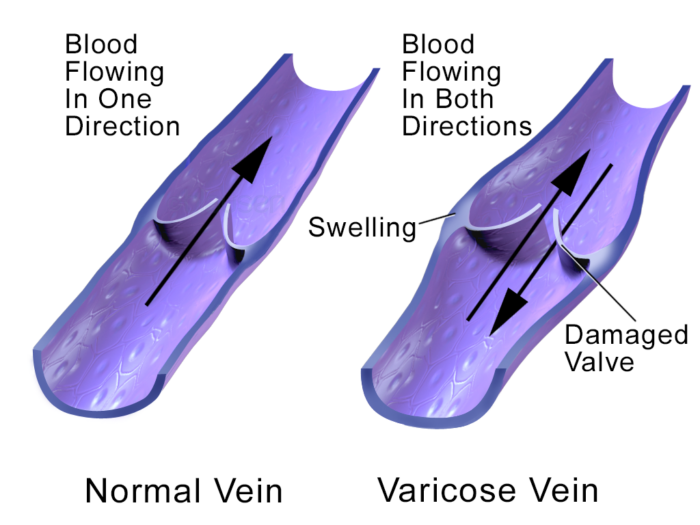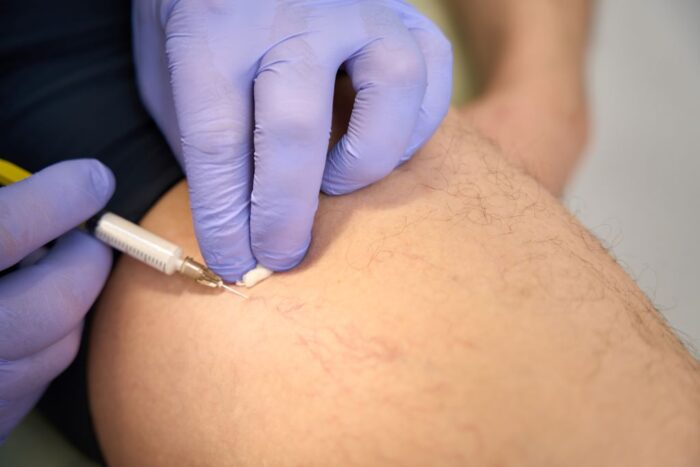Varicose Vein Treatment
Normally, veins carry blood back up the legs, with valves helping to prevent back-flow down the legs. Venous insufficiency or reflux occurs when there is abnormal flow back down through the leaky valves, causing increased venous pressure. Symptoms of venous insufficiency include: aching, pain, heaviness, itching, burning, throbbing and swelling. Venous insufficiency can lead to varicose veins and eventually venous stasis ulcers. VenaCure Endovenous Laser Therapy (EVLT) is a safe and effective laser treatment that treats venous insufficiency. This 30 minute outpatient procedure has minimal side effects and does not require a lengthy recovery. Laser ablation treatments are covered by most health insurances and Medicare. With the VenaCure, the interventional radiologist inserts a thin laser fiber into the faulty vein through a small nick in the skin. The laser energy is transmitted through the fiber causing the vein to seal shut. Blood flow is then rerouted to normal healthy veins. No down time is required, so you may resume normal activities immediately, avoiding rigorous activity for two weeks. A compression stocking is worn for two weeks after the procedure. Laser ablation with the VenaCure is effective 99% of the time and immediate relief of the symptoms of varicose veins is likely.
Advanced Radiology was the first group to perform laser ablation of varicose veins in Nebraska. Advanced Radiology has been awarded the AngioDynamics EVLT Award of Excellence for three consecutive years for outstanding success in laser vein treatments. Advanced Radiology physicians are second to none for minimally invasive vein therapies in Nebraska.

Sclerotherapy
Sclerotherapy is a non-surgical treatment for some types of varicose veins. It is most effective for treating small varicose and spider veins. With sclerotherapy, a solution is injected into the vein. Introducing the sclerotherapy solution causes the vein to scar and finally collapse. When this happens, blood is caused to reroute through healthier veins. Following sclerotherapy, patients notice the treated veins fade over a few weeks.

